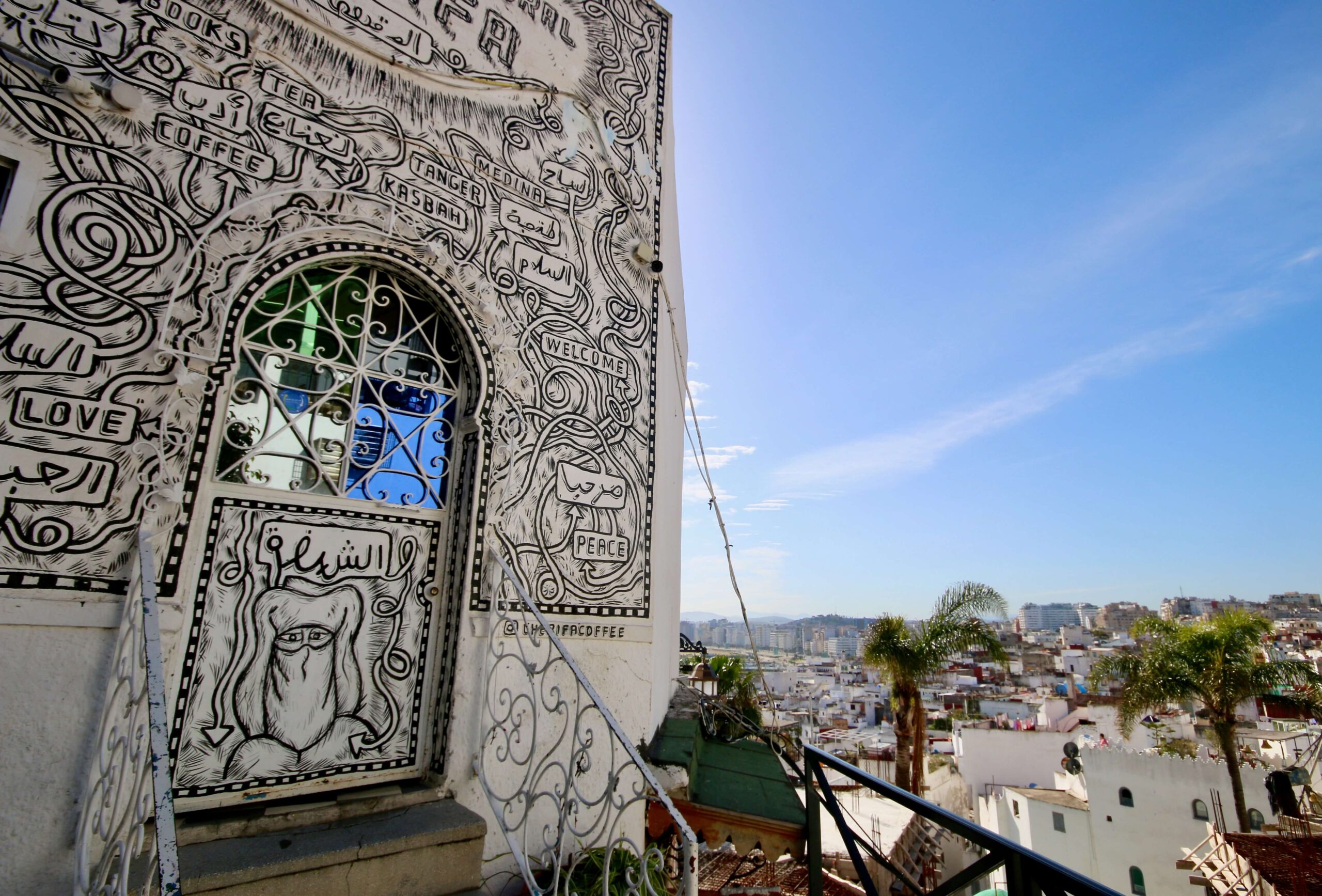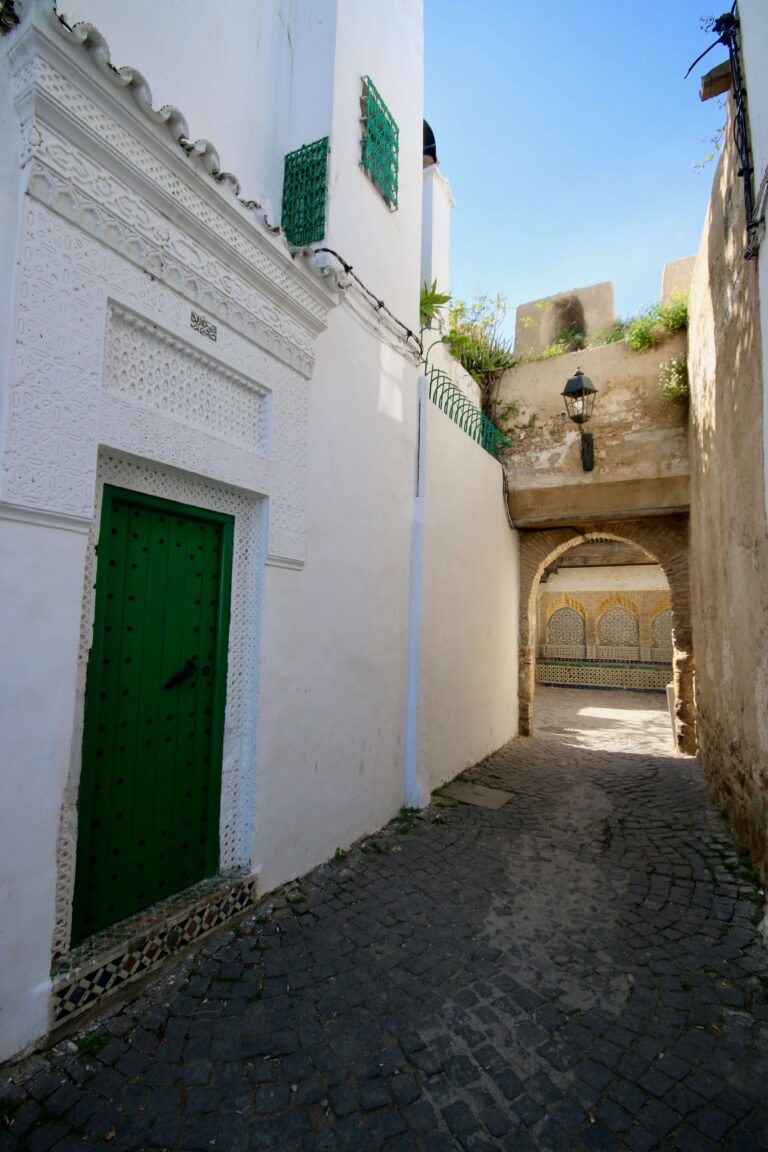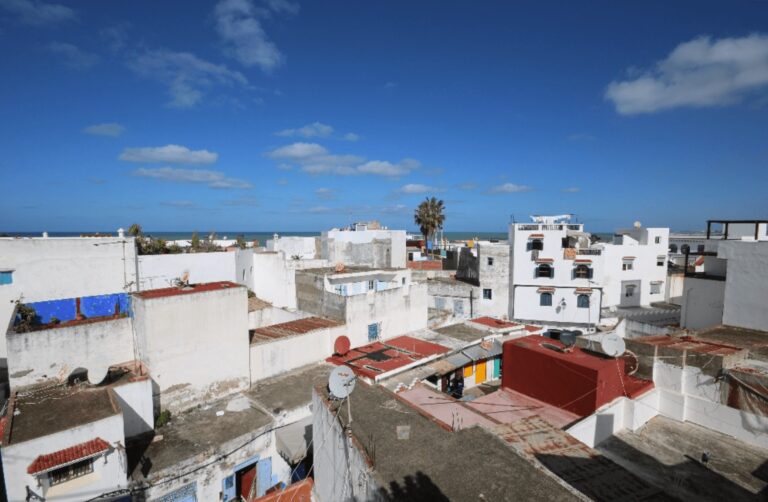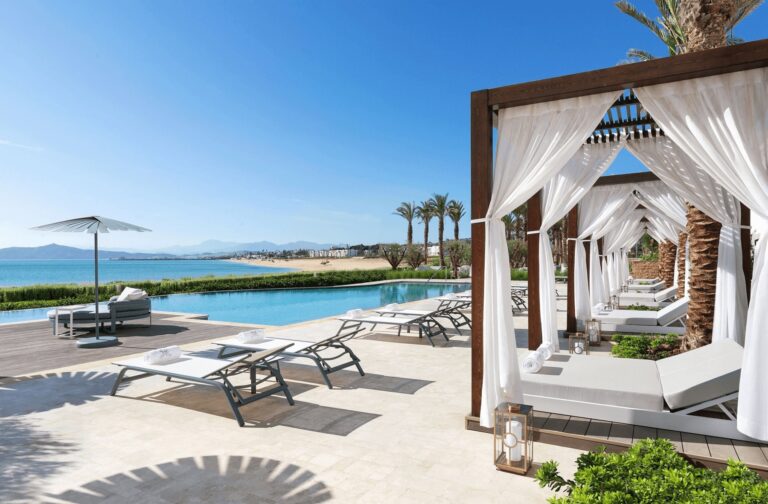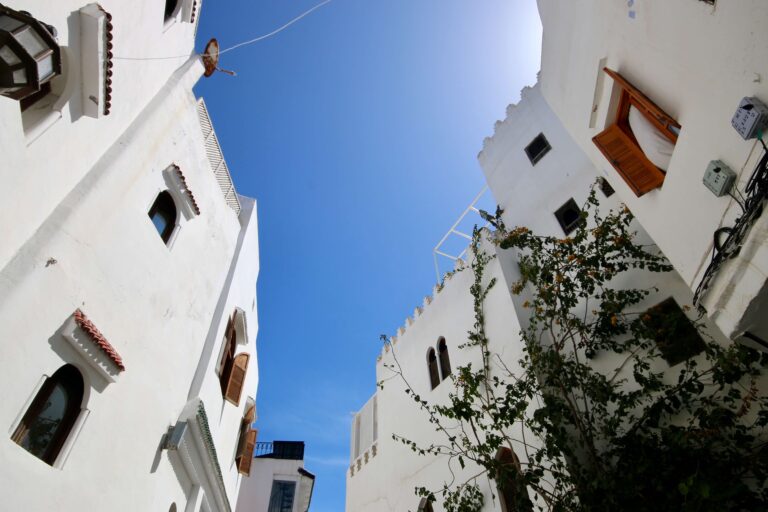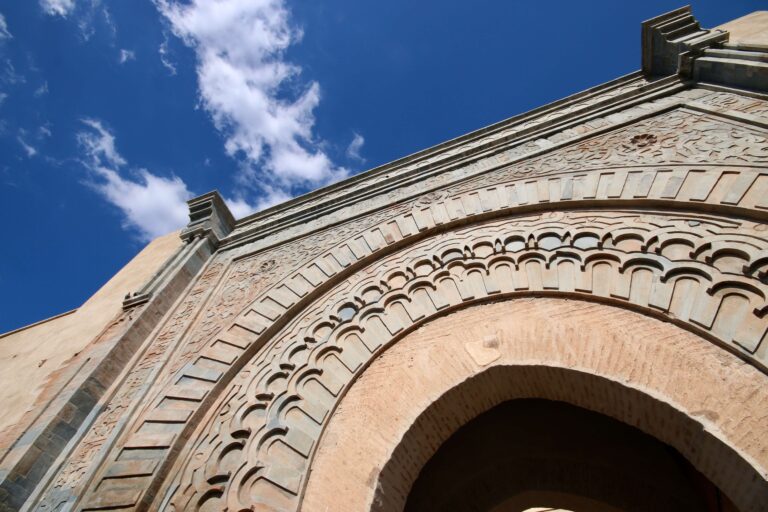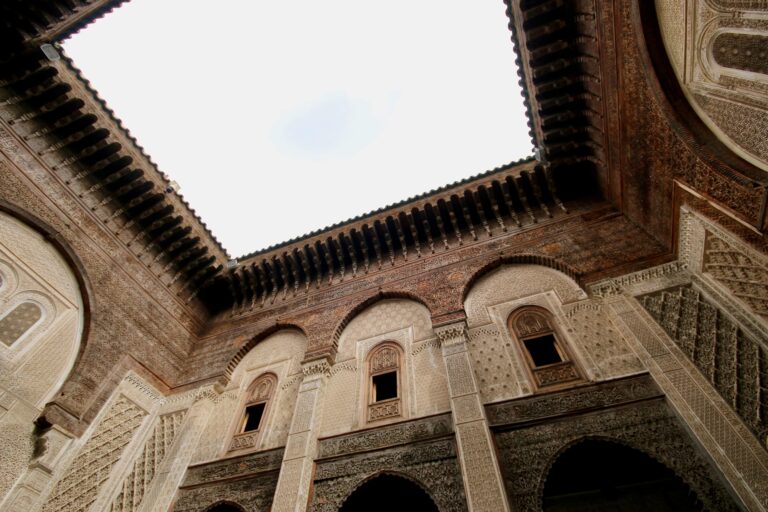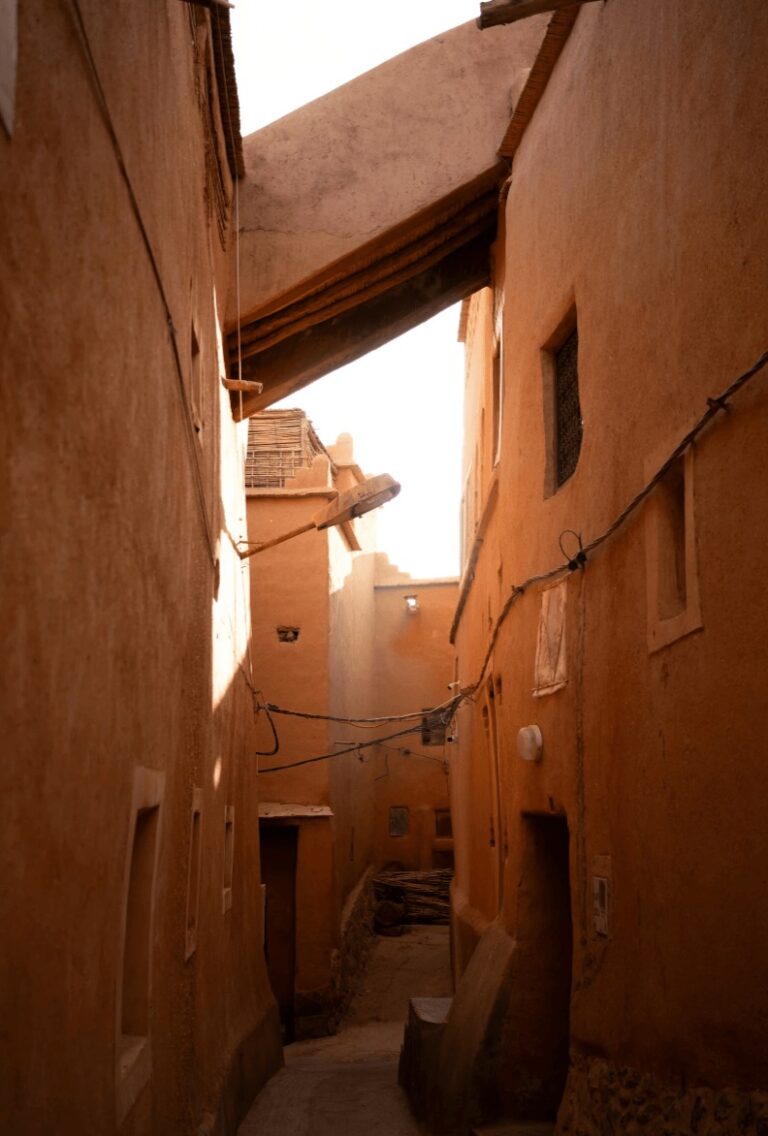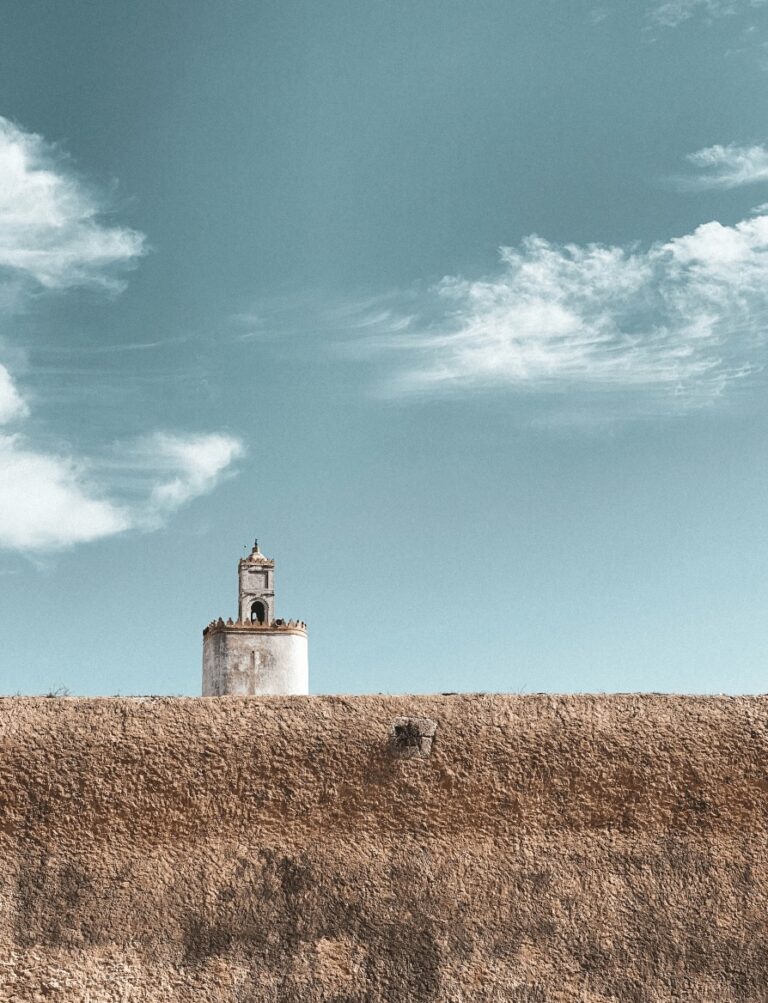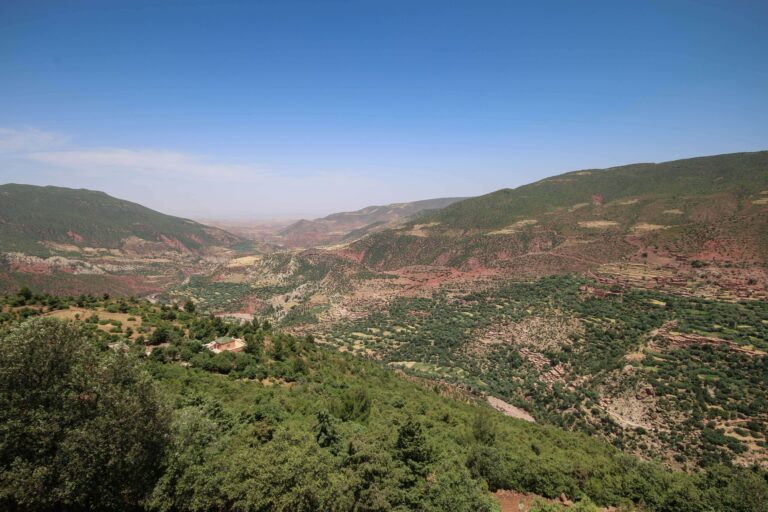One Day Tangier Itinerary: Art + Culture + History
Visiting Tangier but only have 24 hours in the city? Discover where you should visit (and what you should leave out) in my suggested one day Tangier itinerary.
Perched on the northwestern tip of Morocco, Tangier has long been a crossroads where European and African cultures merge. For centuries, this enchanting city has beckoned travellers from near and far, including several notable writers, artists and intellectuals. Today, it’s drawing a whole new generation of culturally curious visitors.
Tangier is a destination I’ve visited several times over the last 10 years. Every time I go, there’s something new to love. There innovative cafes and concept stores popping up across the city. Plus, many of Tangier’s cultural attractions are being revitalised as part of a government initiative (the museums here are fantastic!)
While wandering Tangier’s whitewashed streets, I love discovering new artworks and murals produced by the city’s creatives. There are also some really amazing restaurants that are refreshingly local.
While a one-day itinerary in Tangier might appear too short considering the city’s multitude of sights, you can still experience a wealth of cultural, architectural and artistic attractions. I’m also aware that many travellers only have one day to visit Tangier before returning to Spain or continuing their Moroccan adventure southbound.
In this guide, I’ll share with you my suggestions for a one-day Tangier itinerary. It’s based on the cultural and artistic attractions I visited in a single day on my last visit. As you wander between each location, you’ll have ample opportunity to soak up the lively atmosphere of the medina, go shopping in the souks and feast at one of the many eateries.
This one-day Tangier itinerary starts at Bab El Marsa, near the Port de Tangier Ville. As such, it offers easy access for those visiting Tangier on a day trip from Spain.
I’ve included up-to-date information on opening hours and entrance prices to help you plan ahead and decide which attractions you want to include in your itinerary.
For more information about visiting Tangier, check out my Essential Travel Guide to Tangier. It includes things to do, accommodation recommendations and transport advice.
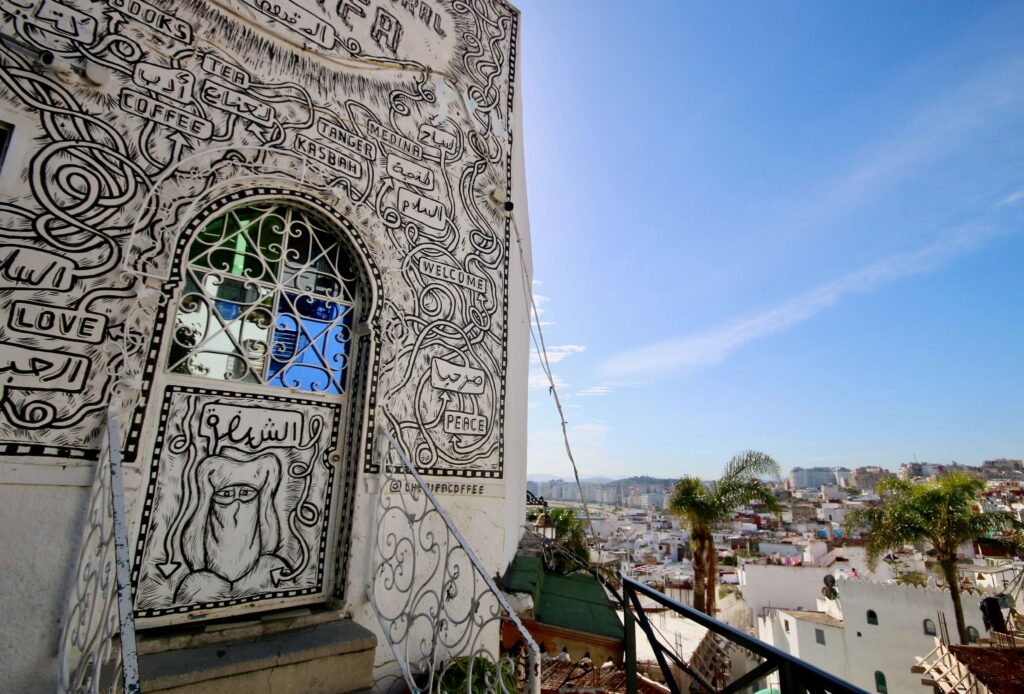
Disclosure: This article contains affiliate links, meaning I earn a small commission when you make a purchase. Affiliate links cost you nothing and ensure my content stays free!
Stop One: Bab El Marsa + Murailles Historique
As you make your way towards Bab El Marsa, one of the main entrances to the medina, there are wonderful views of Tangier’s historic walls. While they date back to the Roman era, the current stone ramparts are primarily from the Portuguese occupation between 1471-1661 and the brief English control from 1662-1684.
Punctuating the walls are 12 sturdy forts, known as borj, and 27 gates called babs. Each has its own story to tell. If you want to walk along the top of the walls, head to the nearby Dar Al-Baroud Tower where (for an entrance fee of 50 DH) you can do just that.
Alternatively, stop in at the Port Centre in Place Bab el Marsa. It details the history of the Port of Tangier within a 19th-century building.
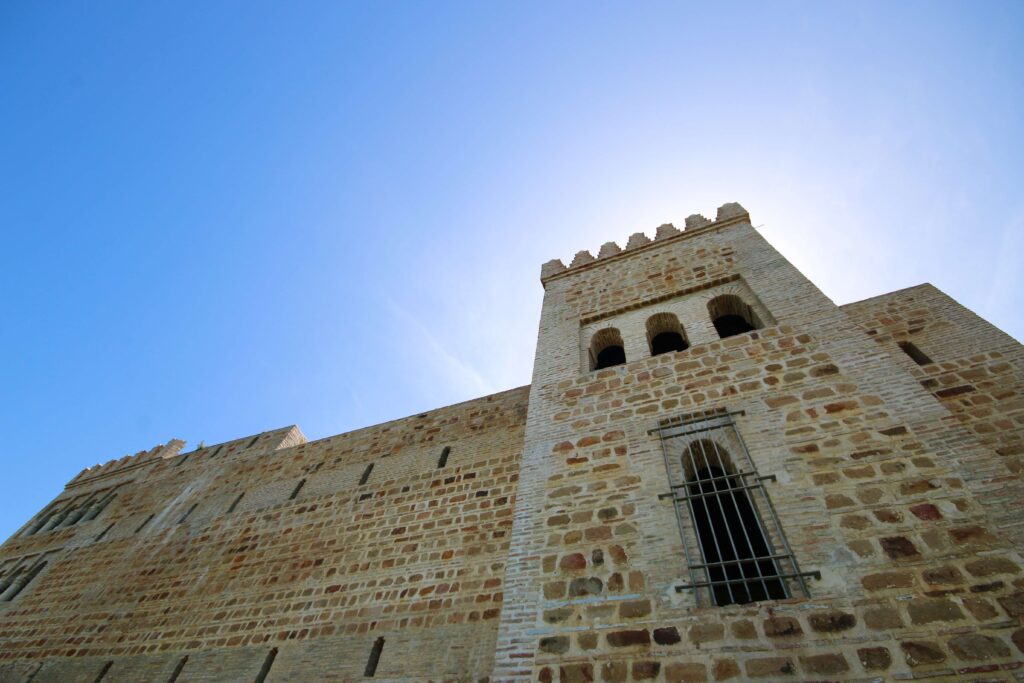
Stop Two: Grand Mosque
If you walk south along the walls, you’ll eventually arrive at Bab Dar Dbagh. It lies next to one of Tangier’s most famous architectural landmarks, the Grand Mosque.
Originally built in the 5th century as a Roman temple, this historic site was transformed into a mosque in the 8th century. After the Portuguese took control in the late 15th century, it served as a cathedral. Eventually, it reverted back to its Islamic roots.
In line with Moroccan religious practices, the Grand Mosque is exclusively for Muslim worshippers. However, visitors of all backgrounds can admire the stunning minaret and the beautifully detailed main entrance, which reflect the 19th-century Alaouite style.
Don’t forget to check out the fountain nearby, adorned with exquisite tiled mosaics and carved stucco.
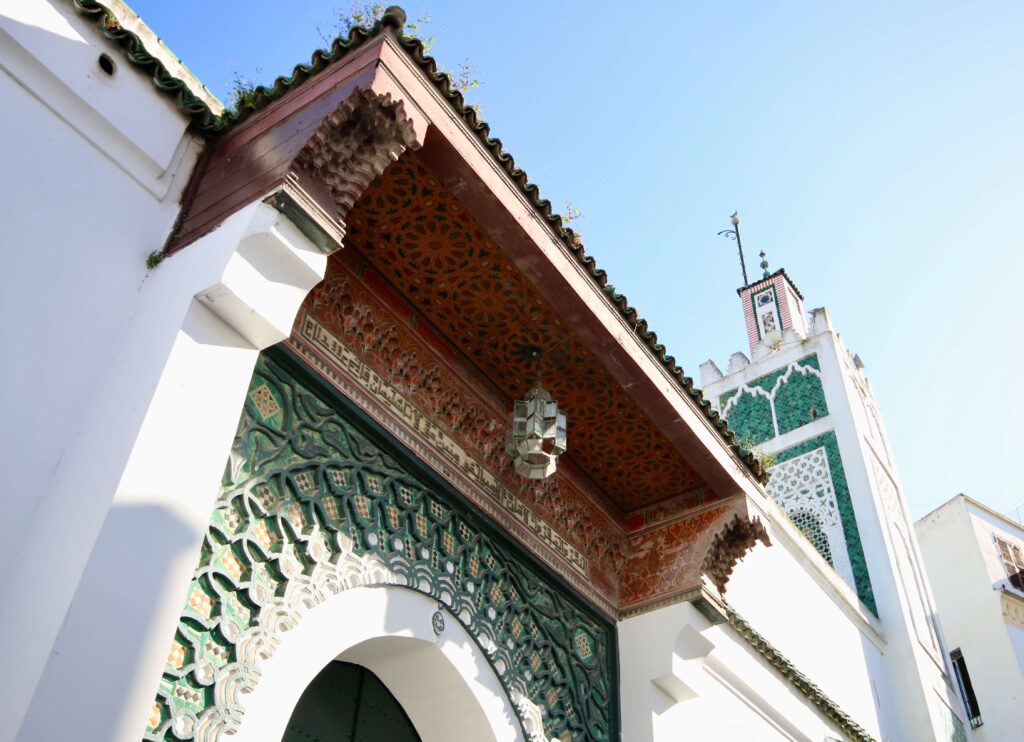
Stop Three: Dar Niaba
From the Grand Mosque, stroll uphill towards Petit Socco, a lively square fringed by alfresco cafes. This is a great spot for a mid-morning coffee or mint tea before continuing on to Dar Niaba.
Originally built during the Portuguese period as a grand urban residence, this is one of the oldest buildings in the city. Its impressive stone entrance remains well-preserved. Between 1816 and 1849, it housed the French Consulate General and subsequently became the home of the Naib, who represented the Sultan.
As the Dar Niaba Museum, it showcases Tangier’s diplomatic history and emphasises the city’s significance in international relations and cultural interactions. The museum displays a variety of antique weapons, early photography tools and a human-drawn cart, accompanied by informative timelines in both French and Arabic.
One of the museum’s standout features is its small but remarkable art collection. I particularly love the portraits of Moroccans created by foreign artists. I found these to be incredibly moving as they offer a glimpse into a Morocco of times gone by.
At the centre of Dar Niaba lies a gorgeous courtyard adorned with orange trees and bordered by whitewashed arches. I really do think it’s a hidden gem in Tangier!
Dar Niaba Museum is open from 10 am to 6 pm (closed Tuesdays) and entrance costs 20 DH.
Top tip:
Not far from Dar Niaba is one of my favourite Tangier eateries – Restaurant Ahlen. The food here is really good (please try the zaalouk) and the prices are more than reasonable considering the size of the plates.

Stop Four: American Legation Museum
A short detour south of Petit Socco is the American Legation Museum. It explores Morocco’s long-established relationship with the United States. This includes the fact that Morocco was the first country to recognise the newly independent country in 1777. If you’re American or interested in diplomacy, this museum is definitely worth a visit.
Among the artefacts and artworks on display is the “Zohra” by James McBey. This portrait of a Tangier servant girl painted in 1952 is often referred to as the “Moroccan Mona Lisa”.
Her eyes are said to follow you as you move around the room. You’ll have to visit to decide if this is true! Be sure to check out the insightful display on Paul Bowles, the American author who fell in love with Morocco and spent over 50 years living in Tangier.
The Tangier American Legation Museum is open from 10 am to 5 pm on weekdays and 10 am to 3 pm on weekends. Entrance costs 50 DH.

Stop Five: Grand Socco
It’s a short walk from the American Legation Museum to Grand Socco, a lively meeting point centred around a magnificent fountain. It’s the perfect spot for people-watching. There are plenty of benches where you can watch the world go by or chat with the older local men who often hang out here in the sunshine.
On one side of Grand Socco is the Art Deco-style Cinema Rif. It has been presenting films in both French and Arabic since the 1930s.
Sprawling to the north of Grand Socco are the shaded lawns of Mendoubia Garden, home to an impressive collection of mature trees.
To the west is St. Andrew’s Church, a Moorish-style house of worship that dates from the late 19th century. It’s set within picturesque grounds that can be accessed by tipping the gatekeeper. Unless, that is, your visit coincides with a Sunday service.
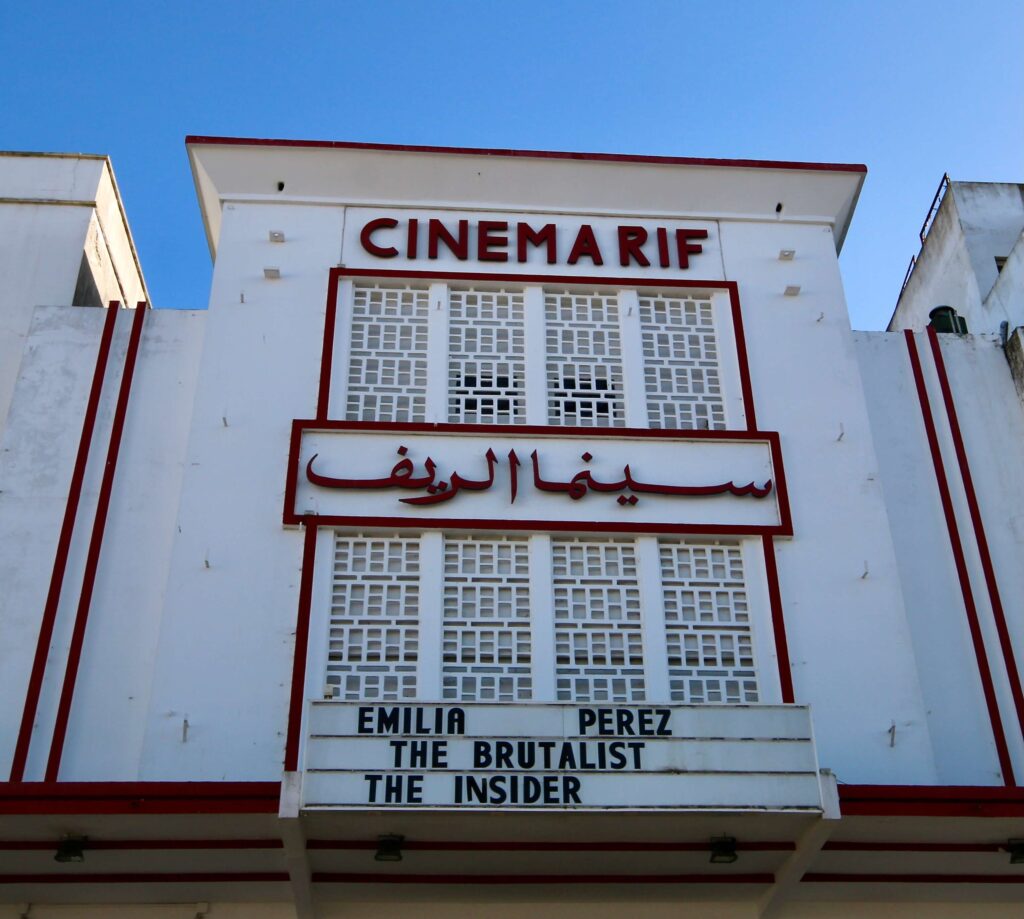
Stop Six: Bab Kasbah + Ibn Battouta Museum
From Grand Socco, you can walk directly up Rue d’Italie towards Rue de la Kasbah, which leads to the gate of Bab Kasbah. It stands where the northern entrance to the Roman Tingis once stood. The remains of these ancient fortifications are still visible in places.
Bab Kasbah has long been a popular subject for creatives, including the Scottish painter David Roberts and the French Romantic artist Eugène Delacroix. Just beyond Bab Kasbah is a photogenic square, filled with cafes shaded by a magnificent tree and several design and concept stores.
It’s also here that you’ll find the Ibn Battouta Museum. It’s dedicated to the life of the Moroccan explorer and Islamic scholar. The exhibits detail his adventures around the globe and his geographical discoveries. There’s a treasure trove of artefacts and manuscripts on display.
The Ibn Battouta Museum is open from 8 am to 6 pm daily and entrance costs 50 DH.
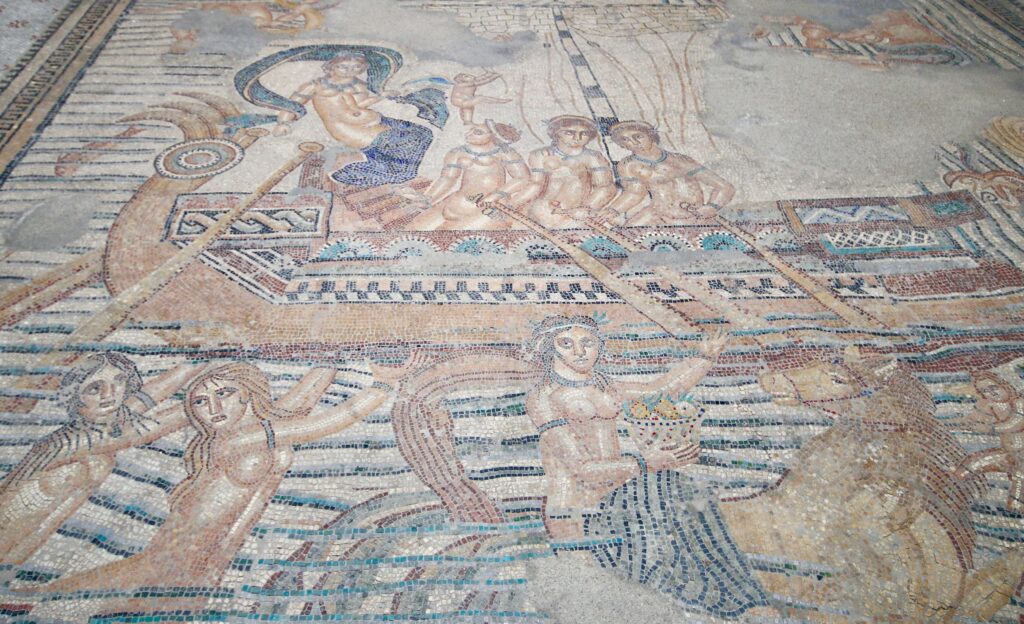
Stop Seven: Kasbah Museum
A short walk along the walls of the Kasbah and through a tunnel takes you to a large open square, watched over by the octagonal minaret of a centuries-old mosque. In the southwest corner is the Kasbah Museum. It occupies historic Dar el Makhzen and showcases a wide range of artefacts that reflect Morocco’s role in Mediterranean cultures.
At the centre of the kasbah are two beautiful courtyards, embellished with intricately carved wooden ceilings, marble fountains and arabesques. Aside from the ancient firearms, silks and ceramics that are exhibited, there are several large replica maps, including one that illustrates Phoenician trade routes.
Artefacts from ancient Roman sites such as Lixus, Cotta, and Volubilis are on display, along with a full-sized Carthaginian tomb and archaeological treasures from the Tangier region.
The Kasbah Museum of Mediterranean Cultures is open from 10 am to 6 pm (closed Tuesdays) and entrance costs 60 DH.

Stop Eight: Museum of Contemporary Art
The entrance fee for the Kasbah Museum of Mediterranean Cultures grants you access to this newly opened museum. It’s part of a broader revitalisation initiative aimed at transforming the Tangier medina.
The Museum of Contemporary Art not only boasts an impressive array of 20th and 21st-century artworks but serves as a centre for cultural exchange.
The exhibitions change regularly, with not only paintings but also sculptures and multimedia pieces on display. The last time I was there, it showcased the work of several Cuban artists.
While the layout of the Museum of Contemporary Art can be somewhat confusing, security personnel are stationed throughout. They’ll always point you in the right direction.
The Museum of Contemporary Art is open from 10 am to 6 pm (closed Tuesdays) and entrance costs 60 DH (included in entrance to Kasbah Museum of Mediterranean Cultures)
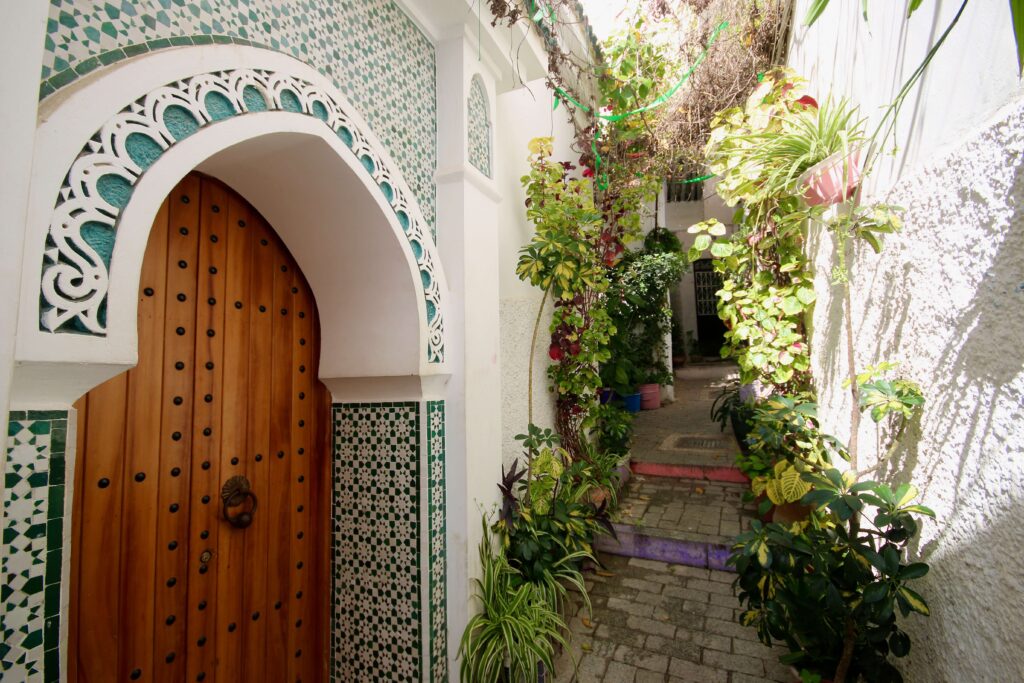
Stop Nine: Bab Al Bahr
After exiting the Museum of Contemporary Art, you can spend some time wandering the whitewashed laneways of the medina. Alternatively, grab a bite to eat on the rooftop terrace of Le Salon Bleu (the views are sublime).
You can also head through nearby Bab Al Bahr and join the locals who gather at its clifftop cafes to watch the sunset.
Also known as the “Gate of the Sea”, the terrace at Bab Al Bahr offers wonderful views across the Strait of Gibraltar. In fact, soldiers were once stationed here to spot invading fleets.
Today, it’s groups of friends and families who congregate to take selfies as the sun goes down. It really is a wonderfully social atmosphere.
If you prefer a west-facing locale to watch the sunset, jump in a taxi for the 30-minute drive to Cap Spartel. This nature reserve features an iconic lighthouse overlooking the Atlantic Ocean.

Inspiring places to stay in Tangier
If you’re planning a visit to Tangier, I’m here to tell you that this historic port city offers some really inspiring places to stay. Whether you’re seeking an atmospheric hostel, a restored riad in the medina or a palatial stay with all the luxuries you could ever want, Tangier can make it happen.
You’ll find a curated collection of the best hotels in Tangier in my detailed article here. Alternatively, here are three of my top picks.
Budget beauty – Kasbah Rose
Mid-range magic – Riad Dar Saba
High-end splurge – Fairmont Tazi Palace
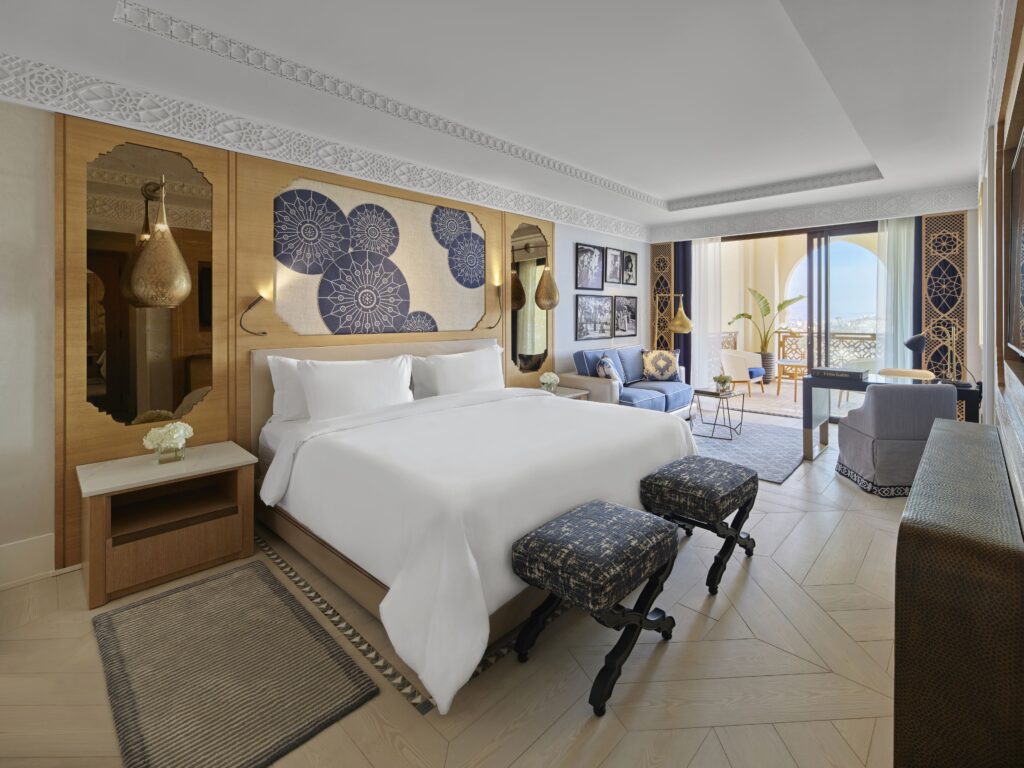
Map for this one-day itinerary in Tangier

Tips for exploring Tangier (and avoiding scams)
- Always discuss taxi fares before hopping in. Even if it’s metered, it’s a good idea to get an estimate upfront.
- Download Google Maps and upload your Tangier itinerary to easily track your location during the day. It’s quite easy to lose your way in the medina and having a little tech in your pocket can save you a lot of hassle.
- If a stranger approaches you to tell you that you’re heading the wrong way, kindly thank them but keep going in your original direction. After they leave, feel free to check Google Maps or ask a shopkeeper for directions if you are, in fact, lost.
- Only accept an offer of a guide if you are willing to pay a suitable tip (this will help to avoid any issues later on) or negotiate a fair price beforehand.
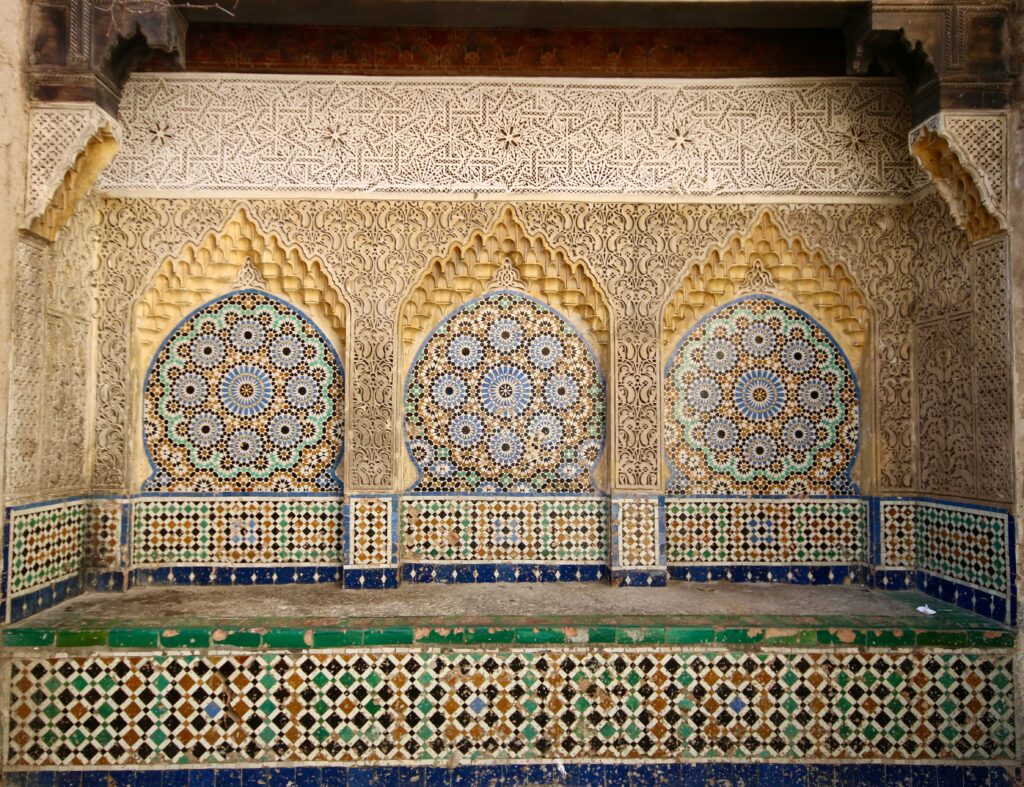
FAQs: One Day Tangier Itinerary
Can you see Tangier in one day?
Yes, a one-day itinerary for Tangier can cover many of the city’s top attractions. This is particularly true if you concentrate on the Kasbah district and medina. In a single day, you can wander the whitewashed laneways to admire the street art, visit several museums and do some shopping in the souks.
If you plan on venturing beyond the medina or want to visit Cap Spartel, then consider a two-day Tangier itinerary. This will ensure you aren’t rushed and can really appreciate what you are experiencing. Rather than feel as though you’re just ticking off sights.
Is Tangier worth seeing?
In my opinion, Tangier should definitely be on your travel list, especially if you’re visiting northern Morocco. Its fascinating history, influenced by a mix of cultures and civilisations, has lured countless travellers over the centuries. Personally, I still think it has a lot to offer.
Not only are there some great museums that will appeal to art lovers and culture vultures but the breezy coastal setting overlooking the Strait of Gibraltar is undeniably appealing.
How many days should I spend in Tangier?
While you can see Tangier in one day, I suggest spending two days in the city for a more fulfilling experience. This will allow you to thoroughly explore the Kasbah district and medina, check out a few museums and take a trip to Cap Spartel.
If you have three days, you can also include a visit to Tetouan or Asilah, both around an hour away.
If your schedule only allows for one day in Tangier, you can still see a lot. This is especially true if you focus on the Kasbah district and medina. Everything is walkable, but be prepared for some uphill sections as the city is hilly!
If you only have time for a one-day itinerary in Tangier, it’s important to plan your stops carefully and select the museums that interest you the most.
Can you do a day trip to Tangier from Spain?
Absolutely, you can easily make a day trip to Tangier from Spain and many travellers do just that! The most popular route is from Tarifa, a coastal town in southern Spain, where you can hop on a ferry that takes about an hour to reach Tangier.
Once you arrive at the port, you can simply walk to the medina. This is where most of Tangier’s cultural gems are found. Don’t miss the Kasbah at the northern edge of this historic district. It provides breathtaking views of the Strait of Gibraltar and the Tangier port.
If you’re planning a day trip from Spain to Tangier, remember to check the ferry schedules ahead of time. Be sure to secure your tickets early, as sailings are limited and prices can rise as the departure date approaches. Also, don’t forget your passport, as it’s required for the border crossing.
Is Tangier safe to visit?
Tangier is widely regarded as a safe and friendly place for travellers, with minimal violent crime reported. However, it’s important to stay alert for pickpockets, which are a common issue in busy city areas.
Kindly refuse any unsolicited offers from “guides” or people telling you that you’re going in the wrong direction. Also, avoid the temptation to buy drugs, as this could lead to trouble with local law enforcement.
For further details on prevalent scams in Morocco, feel free to read my comprehensive article here.
When is the best time to visit Tangier?
I think the spring and autumn months are ideal for exploring Tangier. During these seasons, the temperatures are not too hot and not too cold.
From March to May and September to November, the weather is usually really pleasant (typically in the low to mid-20s). This makes it a great time to wander the medina and dine at the city’s alfresco cafes.
The summer season from June to August can get really warm, often exceeding 30°C. That being said, it’s not as hot as Marrakech due to the coastal breezes.
During this time, many Europeans visit Tangier on their summer vacations and accommodation in the city can be in high demand.
While December is cooler, it remains a popular time for Europeans wanting to flee the winter chill back home. If you’re planning a trip during this period, it’s wise to reserve your accommodations and activities ahead of time.
Do you need a guide for Tangier?
If you’re planning a trip to Tangier, you might be wondering whether hiring a guide is necessary or if you can explore independently. While exploring the city on your own is definitely doable, a knowledgeable local guide can add depth to the experience.
Not only will they provide fascinating stories about Tangier’s storied past but they can also help you steer clear of common tourist traps and scams.
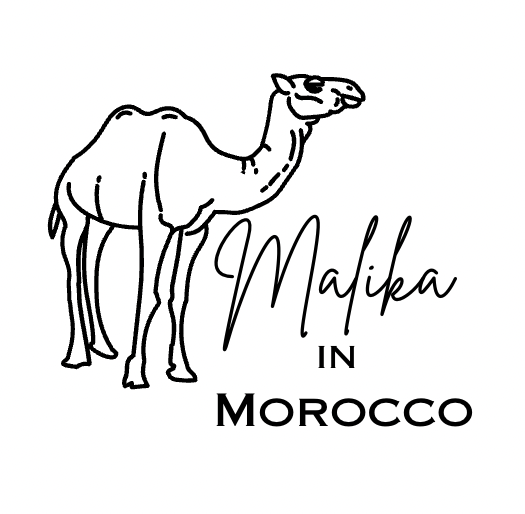
PLAN YOUR TRIP WITH MY FAVOURITE RESOURCES:
Find hotels via Booking
Book tours and attractions via Viator or GetYourGuide
Find a rental car via Discover Cars
Book flights via Kiwi or Booking
Search for buses and trains via 12Go or Omio
Get travel insurance via SafetyWing
Buy a digital eSIM with Airalo
By purchasing through my links, you’ll be supporting my website at no additional cost to you

About Me
I’m Malika, a global traveller who first visited Morocco in 2014 before marrying a local and settling down in a little village on the Atlantic coast. Over the years, I’ve developed an intense love for Morocco, its incredible landscapes, storied cities and the exceptionally generous hospitality of its people.
Malika in Morocco is a place to share my years of experience exploring the country, from north to south and from the Atlantic Ocean to the Sahara Desert. As a resource for travellers visiting Morocco, I want to encourage others to experience this captivating destination the way they desire, whether that’s independently or under the expert guidance of local tour operators.
I believe strongly in supporting responsible and sustainable tourism initiatives while inspiring travel experiences that are life-impacting and mutually beneficial for both travellers and locals.
-
A Historic Andalusian Port: Essential Travel Guide to Tetouan
Looking for the best things to do in Tetouan or highly recommended places to stay? Discover the ideal time to visit, tips for getting around and the best Tetouan tours in this essential travel guide. Clustered along the slopes of the Martil Valley, Tetouan is a historically rich city on Morocco’s Mediterranean coastline. While not…
-
6 Best Tours in Tangier: Culture + Food + Adventure
Looking for the best tours in Tangier? Explore this curated collection of experiences, including cooking classes, guided walks and multi-day adventures to Chefchaouen and Fes. With its blue shuttered windows and whitewashed buildings cascading down to the sea, Tangier exudes a Mediterranean vibe unique for a Moroccan city. Overlooking the Strait of Gibraltar, it has…
-
13 Best Hotels in Tangier: Morocco’s Northern Gateway
Looking for the best hotels in Tangier? Explore this curated collection of highly rated stays, including luxury resorts and budget-friendly hostels. Perched on Morocco’s northernmost edge, Tangier is a cosmopolitan city that has welcomed travellers for centuries. It continues to enchant visitors today with its blend of African, Arab and European influences, not to mention…
-
10 Best Places to Stay in Asilah for All Travel Styles
Looking for the best hotels in Asilah? Browse this curated collection of family-friendly dars, beachside cottages and eco-friendly retreats to find the best places to stay in Asilah. Centred around a whitewashed medina, Asilah is an atmospheric coastal town and one of my favourite places to stay in northern Morocco. It’s brimming with incredible street…
-
11 Best Hotels in Tangier With a Pool for a Summer Stay
Planning a summer stay in Morocco’s northwest? Discover 11 of the best hotels in Tangier with a pool where you can cool off during the heat of the day. With its sun-drenched coastal setting where the Atlantic and Mediterranean meet, Tangier is a gateway destination and many travellers’ first impression of Morocco. It boasts a…
-
A Northern Gateway: Essential Travel Guide to Tangier
Looking for the best things to do in Tangier or highly recommended places to stay? Discover the ideal time to visit, tips for getting around and the best tours in this essential travel guide to Tangier. Just an hour’s ferry ride from Spain, Tangier has long been a hub where European and African cultures converge….
